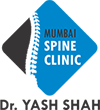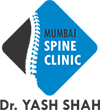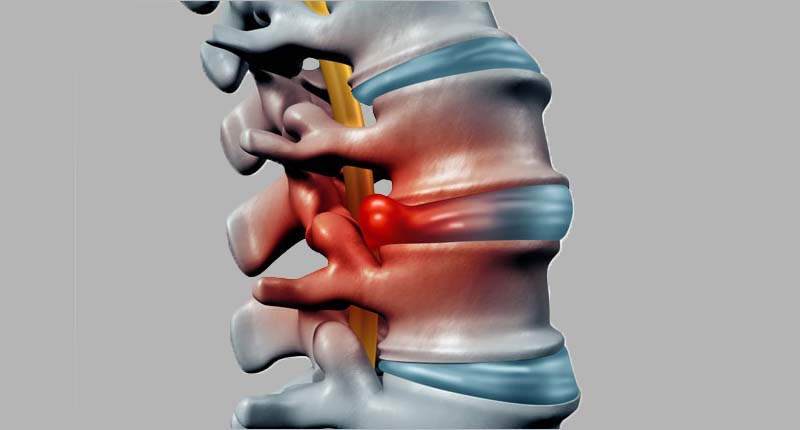Infections in the spine may affect different structures, such as the vertebral column (spinal bones), intervertebral disc space (the cushion-like structures between the vertebrae), and the spinal canal.
Typically, these infections spread to the spine through the bloodstream. Common bacteria, like Staph or E. Coli, can be introduced into the bloodstream following events such as surgery or drug abuse. Dr. Yash Shah offers comprehensive treatment for spinal infections. He also provides non-surgical treatments, Book Appointment Today!
What are the Symptoms of Spine Infection?
The symptoms of a spinal infection tend to develop very slowly. Spinal infections take between 3 days and 3 months to notice. Early-onset symptoms might include tenderness of the neck or back, which can be attributed to many other causes as well.Common warning signs of a spinal infection include
- Pain that is worse with movement and doesn’t respond to rest and medication
- Neck stiffness
- Fever
- Chills
- Swelling or redness at the infection site
- Night pain
- Unexplained weight loss
- Bowel and bladder incontinence
- Progressive development of severe back pain with limited mobility
- Weakness, numbness or tingling in the arms and legs
What Causes Spine Infection?
Spinal infections can be caused by either a bacterial or a fungal infection in another part of the body that has been carried into the spine through the bloodstream. The most common source of spinal infections is a bacterium called staphylococcus aureus, followed by Escherichia coli.Spinal infections may occur after a urological procedure, because the veins in the lower spine come up through the pelvis. The most common area of the spine affected is the lumbar region. Intravenous drug abusers are more prone to infections affecting the cervical region. Recent dental procedures increase the risk of spinal infections, as bacteria that may be introduced into the bloodstream during the procedure can travel to the spine.
Intervertebral disc space infections probably begin in one of the contiguous end plates, and the disc is infected secondarily. In children, there is some controversy as to the origin. Most cultures and biopsies in children are negative, leading experts to believe that childhood discitis may not be an infectious condition, but caused by partial dislocation of the epiphysis (the growth area near the end of a bone), as a result of a flexion injury.
How is Spine Infection Diagnosed?
- Physicians will use one or more of several diagnostic tools to identify the location of infection, and to determine the best course of treatment for you whether surgical or a non-surgical alternative.
- Laboratory Tests
- Blood tests to identify acute-phase proteins, erythrocyte sedimentation rate (ESR) and C-reactive protein (CRP) levels. Both ESR and CRP tests are often good indicators as to whether any inflammation is present in the body.
- Imaging Tools
- Imaging studies determine the location and extent of an infection. The choice of specific imaging techniques varies slightly, depending on the location of the infection.
- Computed Tomography Scan (CT Scan)
- To properly make a bone destruction diagnosis, a CT scan is required. By assessing the degree of bone destruction, the amount of spinal instability can be determined. This can also aid in deciding between non-surgical and surgical treatment options.
- Magnetic Resonance Imaging (MRI)
What are Treatment Options for Spine Infections?
Non- Surgical Treatment for Spine Infection
Spinal infections often require long-term intravenous antibiotic or antifungal therapy and can equate to extended hospitalization time for the patient. Immobilization may be recommended when there is significant pain or the potential for spine instability. If the patient is neurologically and the spinal column is structurally stable, antibiotic treatment should be administered after the organism causing the infection is properly identified. Patients generally undergo antimicrobial therapy for a minimum of six to eight weeks. The type of medication is determined on a case-by-case basis depending on the patient’s specific circumstances, including his or her age.Surgical Treatment for Spine Infection/Spine Infection Surgery
Nonsurgical treatment should be considered first when patients have minimal or no neurological deficits and the morbidity and mortality rate of surgical intervention is high. However, surgery may be indicated when any of the following situations are present:- Significant bone destruction causing spinal instability
- Neurological deficits
- Sepsis with clinical toxicity caused by an abscess unresponsive to antibiotics
- Failure of needle biopsy to obtain needed cultures
- Failure of intravenous antibiotics alone to eradicate the infection
- The surgical options to treat spinal infections range from simply washing out the wound and re-closing to more extensive debridements and removal of infected tissues.
- In some cases it is not possible to close the wound at the time of surgery, and a packing dressing is left in place. This is often changed two to three times a day until the wound heals over a period of several weeks.
What Surgery does
The primary goals of surgery are to:- Debride (clean and remove) the infected tissue
- Enable the infected tissue to receive adequate blood flow to help promote healing
- Restore spinal stability with the use of instrumentation to fuse the unstable spine
- Restore function or limit the degree of neurological impairment


